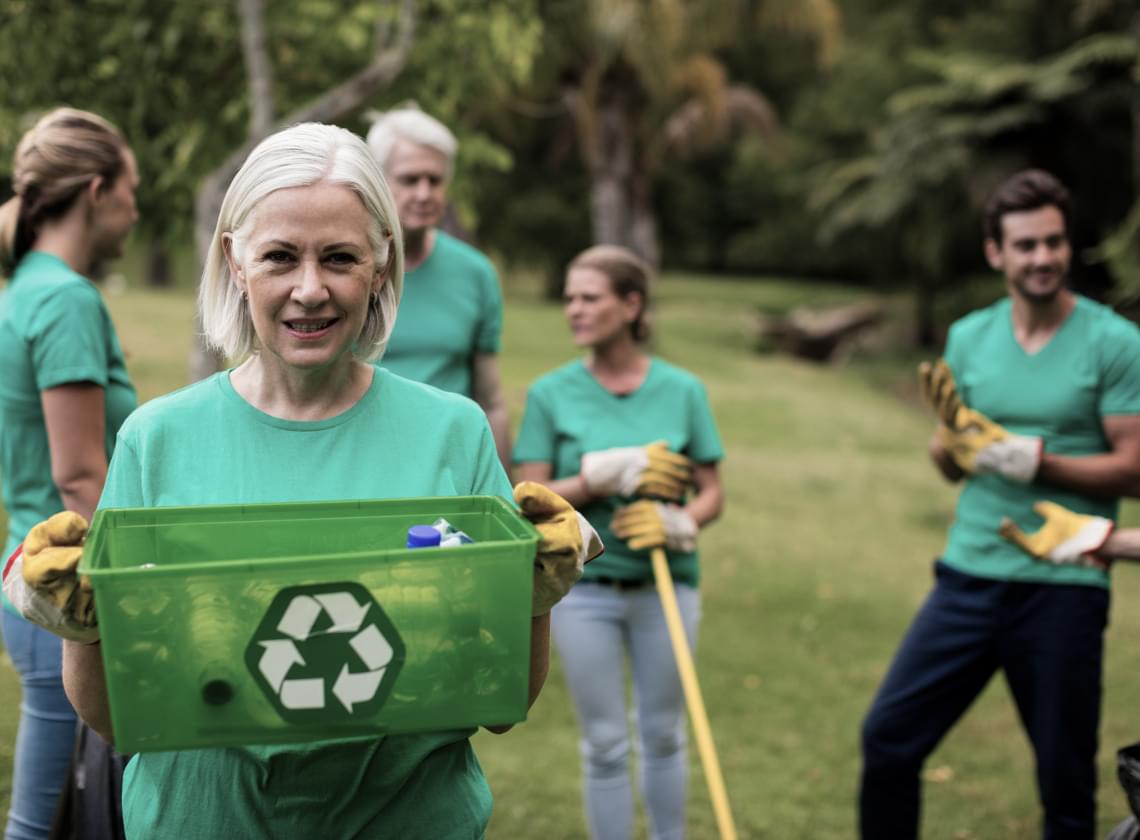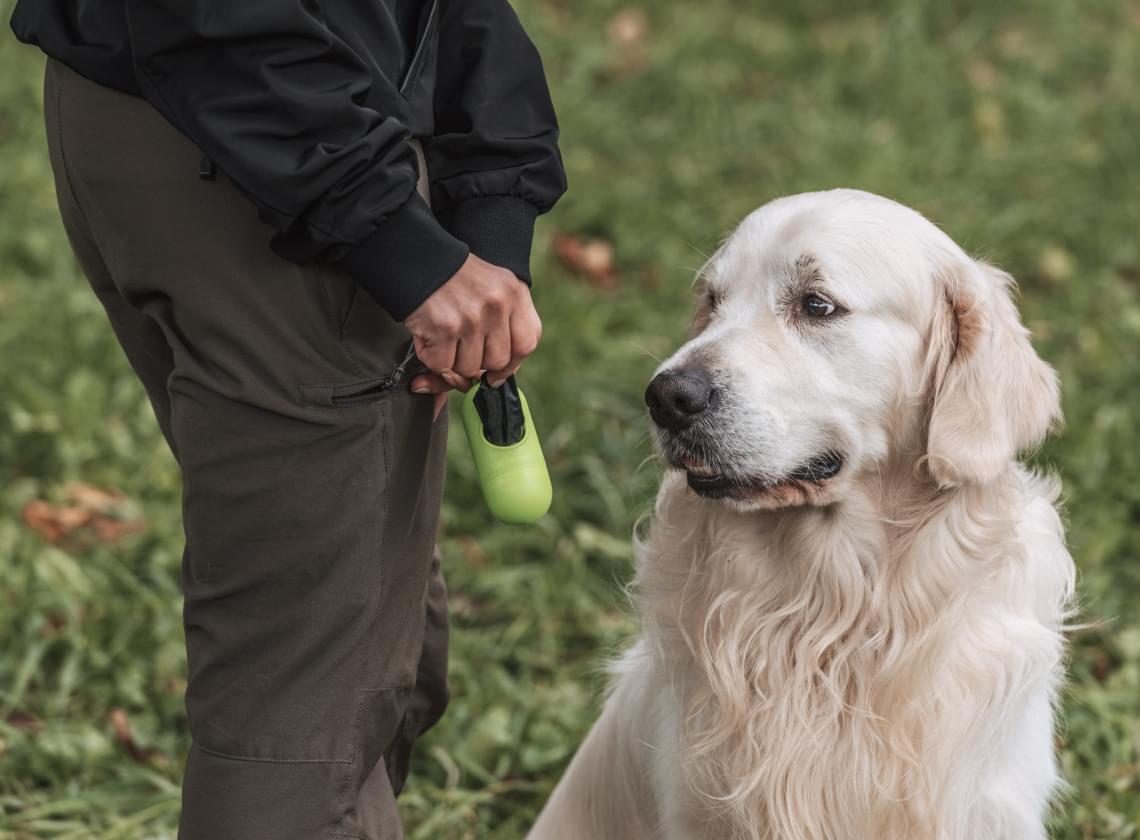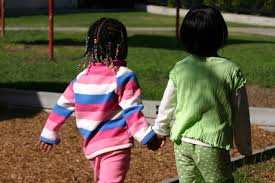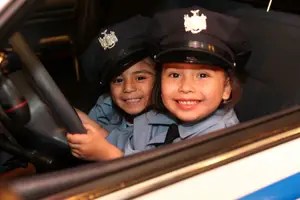Birdwatching to Uncover Our Natural World
May 3, 2013
No matter where you live, chances are you see birds every day. The tall buildings of the city, parks large and small, suburban neighborhoods and rural areas all provide habitat for different kinds of birds. Give kids an opportunity to notice and watch the birds around you and you may be opening the door to new discoveries, a wealth of learning opportunities and maybe even a life-long appreciation of nature.
Here are some ideas for young birdwatchers:
Hang a bird feeder near a window (natural intelligence)
Create a bird-friendly habitat, even in an urban area, by setting out potted shrubs or other greenery and a bird bath (natural intelligence)
Get a book that identifies birds in your area (or look them up online) and help kids identify the birds they see (linguistic, logical/mathematical, spatial intelligences)
Encourage older kids to keep a bird journal where they can jot down or draw pictures of their observations (linguistic, spatial, natural intelligences)
Look for bird nests, try out binoculars (spatial, natural intelligences)
Look at bird feathers with a magnifying lens (spatial)
Act out the bird behaviors you see (natural, kinesthetic, intrapersonal intelligences)
Go for nature walks and talk about where you see birds and what they are doing (natural, kinesthetic, linguistic, interpersonal intelligences)
For even more great ideas and information on the wonderful benefits and discoveries children can enjoy just by taking notice of the birds around them, check out this article in Teaching Young Children Magazine.
Filed under: Activities for Kids, Multiple Intelligences, Preschool, Themes | Tagged: Activities for Kids, Early Childhood, kindergarten, Multiple Intelligences, Preschool, Science, Teaching, Themes | Leave a comment »
Letter Days
Posted on
July 23, 2009
by wowkits
My daughter’s preschool started a new concept for their summer program and it’s been a great hit with all the kids. They are celebrating the alphabet with “Letter Days”. The idea is a simple one:
Each day a new letter is celebrated
Children are encouraged to bring in an item for “sharing time” that begins with that letter. Today is “O” day and my daughter chose to bring in an orange bracelet. She is thrilled that orange starts with O and that it looks like the letter O.
Each day features a craft and snack that starts with that letter. For “H” day they had hummus (with pretzels) and made “hearts and hands” wrapping paper by stamping hand prints and heart shapes on a “huge” sheet of paper.
Each day they make a special “tribute” to the letter. The featured letter is written in the center of a half sheet of paper. Around it, the children do a leaf rubbing (they rubbed goldenrod leaves for “G”, a maple leaf for “m”), stamp images of something beginning with the letter and draw pictures.
The kids are loving it! Each day at drop-off children are showing me what they brought for sharing. Many are even choosing the clothes they wear to coordinate with the letter of the day, a shirt with a picture of an island for “I” day, a dress for “D” day. I overhear conversations children are having about things they encounter that begin with the letter of the day. At bed time my daughter wants to brainstorm ideas of words that begin with the next day’s letter. It has been a great way to reinforce alphabet concepts over the summer, but I’m sure it could be an equally successful school year project.
Filed under: Activities for Kids, Literacy, Preschool, Themes | Tagged: Activities for Kids, Curriculum, early literacy, Preschool, Summer, Themes | Leave a comment »
Sunshine Science
Posted on
July 9, 2009
by wowkits
Science isn’t scary. It’s all around us! And there is no better way to get kids excited about the wonders of the natural world than to experiment with the magical properties of sunlight. Here are a few fun-in-the-sun science experiments for preschool and kindergarten:
Sun Prints– Place several objects (key, rock, leaf) on a piece of dark construction paper. Leave it in the sunshine (indoors or out) for a few hours. Invite kids to remove the objects to reveal their sun prints!
Shadow Tracing– invite children to trace shadows with chalk on a paved walkway or driveway. If there are no fixed-object shadows to trace (trees, signs, etc.) encourage children to trace each others shadows. Be sure to trace around the feet of the standing child to make sure they can get back into the same position later in the day. A few hours later, return to the tracings. Are the shadows still within the traced lines?
Rainbow Makers– Grab a hose and a spray attachment. Spray a mist of water into the air on a sunny day and encourage children to look for the rainbow!
Shadow Shapes– Invite children to make shadow shapes with their arms or whole bodies. If you’re on a paved surface, capture the shapes by tracing them.
Warming Up Water– set out a small metal (or other dark and non-breakable) bowl with water in a sunny spot. Place another small bowl of water in a shady spot. After a few hours, bring the bowls together and invite children to compare the temperatures of the water.
As you do these experiments with children, ask questions. What do you think will happen? What did happen? Why?
These experiments will get kids thinking about:
the source of sunlight
the properties of sunlight
how the sun moves through the sky
the relationship between light and heat
the power of sunlight
Filed under: Activities for Kids, Preschool, Themes | Tagged: Activities for Kids, Importance of Play, kindergarten, Preschool, Teaching, Themes | Leave a comment »
A Garden Project Grows Young Minds
Posted on
May 6, 2009
by wowkits
Large projects are a great way to make learning a fun, real and unforgetable experience for young children. Planning, preparing, planting, tending and harvesting a vegetable garden is a great way to tie in all sorts of important concepts including:
plant life cycles
living and non living
seasonal cycles
weather
insects
food/food groups/nutrition
healthy habits
Gardens also tap into children’s energy and natural curiosity. Children learn through their senses, at their own pace and in their own way. Some of the Multiple Intelligences addressed while gardening include:
Linguistic– talking about your plans; describing your actions; discussing problems/issues; learning new garden-related vocabulary; keeping a garden journal
Logical/Mathematical– counting and sorting seeds; measuring garden space, seed spacing, plant height, rainfall
Spatial– planning garden space; drawing pictures of plants as they grow, creating seed markers
Kinesthetic– digging, weeding, raking, harvesting
Musical– singing garden-related songs; tapping or otherwise keeping a rhythm as you dig or plant; listening to the sounds of nature as you spend time outdoors
Interpersonal– working together to prepare soil, add compost, water, harvest food, create snacks or meals, etc.
Intrapersonal– quiet, independent time weeding or digging
Natural– watching plant cycles and insect life
You don’t need a large outdoor space to create a class garden that can become a season-long project. A small garden plot can keep kids very busy. Several large pots or other planting containers can become a bountiful urban garden. Not only will your children learn a lot, they will also have an opportunity to experience nature and that in itself comes with a host of benefits!
Filed under: Activities for Kids, Multiple Intelligences, Preschool, Themes | Tagged: Activities for Kids, Curriculum, Multiple Intelligences, nutrition, Preschool, sensory experiences, Summer, Teaching, Themes | Leave a comment »
A Look at Seeds Through Multiple Intelligences
Posted on
April 10, 2009
by wowkits
It’s that time of year- seeds are sprouting and buds are bursting into bloom! No doubt your children have noticed. Nature’s springtime rebirth is endlessly fascinating to children and the guided exploration of seeds is a great way to give children a front-row seat to this amazing time of year.
Here are some ideas of how to explore seeds using a Multiple Intelligences approach:
Linguistic– Read The Tiny Seed by Eric Carle, talk about children’s experiences gardening or planting seeds; encourage children to discuss questions or have a conversation about how seeds grow
Logical/Mathematical– give children a variety of different types of seeds to sort; create patterns with seeds; use standard or non standard measurements to track a seedling’s growth; create sequence cards showing a seed sprouting, growing and blooming
Spatial– create seed art by pasting various small seeds onto construction paper, sticking them into a slab of self-hardening clay or arranging them on sticky-backed contact paper; create a sketch journal to record the growth of a seed
Kinesthetic– encourage children to squat down like a little seed, the slowly rise and grow, then spread out arms as the plant blooms
Musical– create musical shakers by putting seeds into plastic bottles
Interpersonal– invite children to work together to prep the soil and plant an outdoor or indoor container garden
Intrapersonal– Set out a bouquet of flowers for children. Invite them to draw quietly as they look at the flowers, then talk about the drawings or the feelings they have as they look at the flowers
Natural– Track the life cycle of your seed, from sprouting to blooming and fading away and composting. Talk about this cycle with children
Filed under: Activities for Kids, Multiple Intelligences, Preschool, Themes | Tagged: Activities for Kids, Curriculum, kindergarten, Multiple Intelligences, Preschool, Teaching, Themes | Leave a comment »
Curiosity Comes Alive in Project Based Learning
Posted on
February 13, 2009
by wowkits
I’m a big fan of project-based learning. It is the ultimate way to create a thematic unit full of hands on learning fun. Children become partners in the curriculum planning because the success of your project depends on their interest and enthusiasm.
Planning is essential though. You need a project goal and then you need to break down that goal into smaller parts for children to build upon. For teachers it can be hard to figure out how to walk that fine line between planning ahead to guide learning and following the children’s lead.
But when learning in the classroom overlaps with the real world and children feel that they have a larger stake in the day’s activities, it’s amazing how excited about learning, and curious about the world, they become.
Here is a video clip of a big moment in one class’s project on worms. The children’s excitement is contagious! A project approach to teaching may take a little getting used to, but if it can create curious kids, it is definitely worth a try.
The Illinois Early Learning Project has a great online tip sheet to help teachers plan and coordinate a learning project. Here are the basic steps:
Phase 1- Getting Started
Choose a topic
Ask children what they know
Ask children what they want to learn (questions they may have)
Phase 2- Collecting Information
Teachers use children’s questions to plan trips or present other resources to children
Children collect and record information through journals, drawings, charts, etc. and share/discuss new knowledge
Phase 3- Concluding the Project
Children use information gathered to answer previous questions
Children decide how to present new knowledge to parents and school community
Filed under: Activities for Kids, Preschool, Themes | Tagged: Activities for Kids, Curriculum, kindergarten, Preschool, Teaching, Themes | Leave a comment »
Holidays: An Exploration of Diversity
Posted on
November 21, 2008
by wowkits
As the holidays approach, conversations in your preschool class may begin to revolve around the upcoming family celebrations that your children are so looking forward to. For teachers who have cultural diversity in their classrooms, this can be a stressful time. Honoring the various traditions of your children’s families while trying to meet the expectations of the majority, or even a minority of very vocal parents/community members can be challenging. It is also a wonderful opportunity to explore the concept of diversity.
A diversity theme can be intimidating, but it can also be a wonderful way to get to know your families, strengthen the home/school connection and create a strong sense of community within your classroom. Here are some ideas:
Send home a parent letter and questionnaire– give parents advanced notice of the theme. Ask families where they come from, if they will be having a holiday celebration and if they would be willing to come in to talk about their traditions or bring in culturally relevant items or food. (Intelligences: Interpersonal, Linguistic)
Introduce the theme to your group by making “kid masks”– take a photo of each child. Blow it up to 5×7 or larger. Cut out the face. Laminate the photo. Mount it on a craft stick. Give children their masks. Encourage them to look at each others masks, try out the different masks, talk about how they are alike and different. Use them throughout the theme. Sort and group the masks by hair color, eye color, etc. Incorporate the masks into the dramatic play area. (Intelligences: Spatial, Interpersonal, Linguistic, Logical/Mathematical, Kinesthetic)
Encourage children to bring in photos of last year’s holiday celebration at home, or of a favorite family tradition. Use these photos to jog memories, have conversations, draw pictures or create stories. (Intelligences: Interpersonal, Intrapersonal, Linguistic)
Explore books that are relevant to the cultures of the children in your program. (Intelligences: Linguistic, Intrapersonal)
Learn games from the family cultures of your classroom. (Intelligence: Interpersonal, Kinesthetic)
Look for songs in the home languages of the children in your classroom and encourage the class to learn a word or phrase in that language. (Intelligences: Musical, Linguistic, Intrapersonal)
These are just a few ideas. If you’ve tackled this challenging theme with the children in your program, we’d love to hear about what worked for you!
Filed under: Activities for Kids, Multiple Intelligences, Preschool, Themes | Tagged: Activities for Kids, community, Early Childhood, Family, holidays, Multiple Intelligences, Preschool, Themes | Leave a comment »
Using Themes with Toddlers
Posted on
October 29, 2008
by wowkits
I get a lot of calls from teachers looking for theme-based curriculum for toddlers. Right now at World of Wonder the only theme we have for this age group is making music, and that kit was designed to help teachers bring music exploration into their classrooms throughout the year, rather than as a short-term theme.
Themes are a great way to organize learning experience for toddlers, but toddlers are not small preschoolers. Developmentally, they are in a very different place and so the types of themes we use and teacher’s expectations of how those themes will look need to be adjusted. Some things to consider when planning your toddler theme:
Toddlers are very concrete thinkers with little experience in the world. Themes should be concrete and familiar, like “shoes”, “apples” or “dirt”.
Toddlers have their own internal agenda and are not motivated by the idea of being part of a group. Keep large group activities at a minimum. Instead set up “exploration stations” where children can explore a new activity on their own terms.
Toddlers have no interest in a final product. It’s the process that engages them. Instead of crafts, create sensory experiences (focus on the way paint feels rather than on painting a pumpkin). Worksheets are not appropriate for this age group.
Toddlers are language sponges. Talk with them at every opportunity using theme-related concepts and vocabulary. You don’t need to quiz or question them. Just keeping a running monologue of their activities is enough to expose them to new language in a meaningful way.
Toddlers need repetition. Each time a toddler explores an activity, plays a game or listens to a book they are either learning new and different things or practicing emerging skills. They thrive on this repetition. Move slowly through theme activities and give them plenty of opportunities for repetition.
This article is a pretty good example of how a theme might look in a toddler setting. Feel free to share your experiences with toddler themes here.
Filed under: Infant/Toddler, Themes | Tagged: Teaching, Themes, toddlers | Leave a comment »
Benefits of Teaching through Themes
Posted on
August 7, 2008
by wowkits
Thematic units are the backbone of the preschool and kindergarten learning materials available through wowkits. I have always believed that themes are the best way to engage young children in learning, no matter what their strengths or abilities. Today I came across an article in the teacher resource section of pbs.org stating:
Thematic units provide one of the best vehicles for integrating content areas in a way that makes sense to children and helps them make connections to transfer knowledge they learn and apply it in a meaningful way. Thematic units also address the diverse learning styles of the students we serve.
The article goes on to explain the many benefits of teaching with themes and echoes a lot of my beliefs and the reasoning behind our thematic units. It is also very well documented. To read the entire article, click here. I highly recommend it to anyone currently using or considering using themes in the classroom.
Filed under: Education Industry, Themes, World of Wonder | Tagged: Early Childhood, Preschool, Teaching, Themes | Leave a comment »
Healthy Choices
Posted on
July 8, 2008
by wowkits
Summer has brought with it a bounty of tasty snack treats. Whether it’s play-date snacks, camp snacks, snacks for outings, or visits to berry-picking fields and farmers’ markets, snack offerings are everywhere. Bug is getting old enough to have definite ideas about what she wants for a snack, and I’m thankful that she generally makes healthy choices. I don’t know how much of it is from my early attempts at teaching the difference between “sometimes treats” (a term I first heard on Sesame Street) and “anytime treats” or if it’s really just her general lack of a sweet tooth. Either way, I’m thrilled.
I think it’s going to be a little tougher with Babe. He generally refuses anything green and has a way of shutting his eyes and mouth so tightly as the offending food approaches that it seems as if he is also trying to shut his nose and ears (just in case I had any crazy notions of trying a new entry way for getting the food into his body). He loves fruit, but nothing gets him more excited than the cookie he gets from his beloved day care provider at pick up time.
As I watch my kids navigate the world of snacks, I keep turning over a new curriculum theme in my mind. I’d like to create something to help encourage healthy eating habits. I’ve been collecting articles and ideas on the topic for a few years now, and it’s been a few years since WoW Kits came out with a new preschool theme. If you have any experiences on the topic you’d like to share, or any approach or specific area you think I should look into, please comment here.
Filed under: Health, Personal Life, Themes | Tagged: Curriculum, kids, Summer, Themes | Leave a comment »
Field Trips
Posted on
June 25, 2008
by wowkits
I’m on the board of our local children’s museum and we’ve noticed a big drop in attendance this spring. It could be the weather. It was a long winter, and once it began to warm up the playground was full of families with young kids eager to stretch their legs and shake off some of that cabin fever. Maybe it was road construction keeping folks away. But I suspect it was gas prices. We’ve got a ton of great programs lined up for the fall and we’ve even secured some grant money to enable us to offer several programs for free to schools serving low income and at-risk kids, but many of the schools are not able to commit to a field trip with the cost of transportation being what it is.
I’m sure this is an issue across the country. Now a lot of the WoWKits I create are based on themes and it got me thinking that teachers could fill this field trip void by really getting into themed units. Imagine a classroom where each month the entire feel and look of the room changes completely to complement the theme of study. Giant cardboard trees with tissue paper leaves and vines of paper streamers could transform a classroom into the rain forest. The sound of a rainstorm on a CD could greet the children each morning or lull them to sleep at nap time. Rain forest animals could lurk in the toy bin or puppet corner. Going all- out with themes could create the same sort of energy and excitement of a field trip. It could also give that all important real-world context for the concepts children need to master. If we can’t get our children out into the community to see a bit of the world, let’s do our best to bring the world into their classrooms.
Filed under: Education Industry, Themes | Tagged: Education Industry, Teaching, Themes | Leave a comment »



